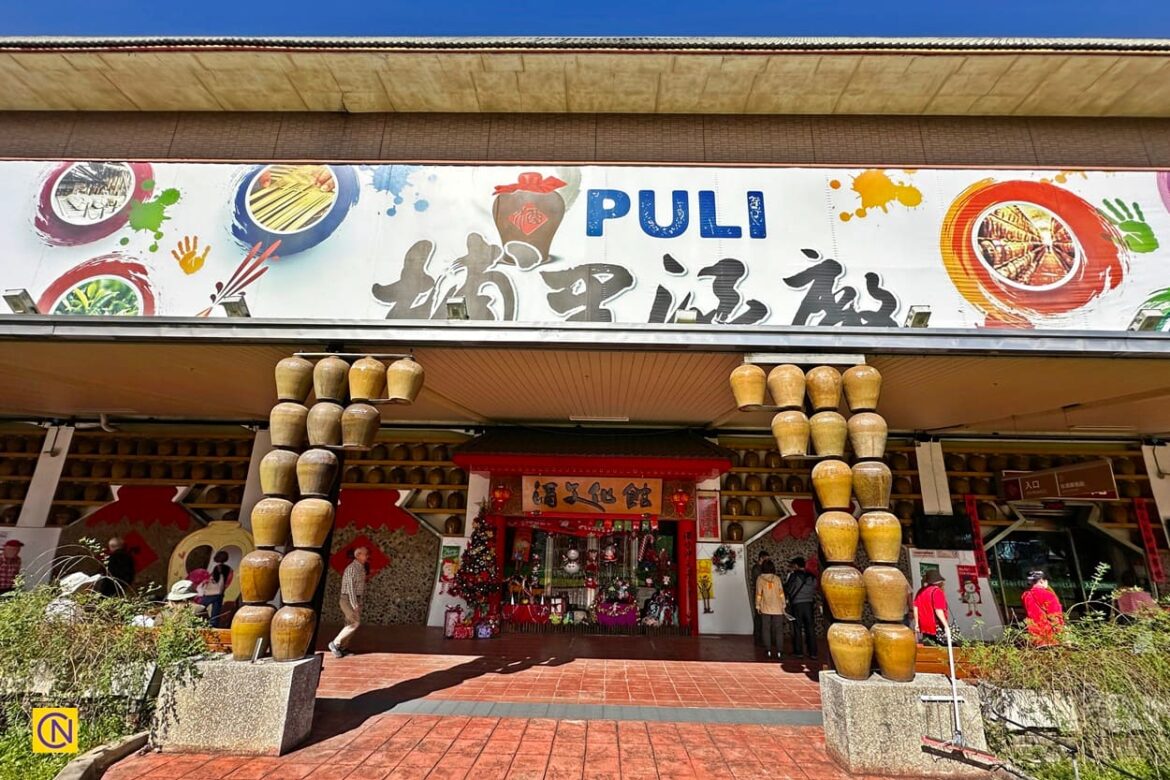Located in the heart of Puli Township, Nantou County, the Wine Culture Museum was established to celebrate Taiwan’s century-old winemaking tradition. The museum was established as part of an initiative to preserve and promote Taiwan’s indigenous brewing techniques and wine culture. Since its inception, it has become a hub for education, tourism, and cultural exchange, attracting local and international visitors eager to learn about the art of Taiwanese wine.
Watch the following video on the First Wine Culture Museum in Taiwan for more interesting images.
The history of the Wine Culture Museum
The Taiwan Wine Culture Museum, established in 1996, is Taiwan’s first museum dedicated to the rich history and craftsmanship of local wine/liquor production. Located within the Puli Brewery Factory in Puli Township, the museum showcases the brewery’s evolution from its origins during the Japanese colonial period to its present status as a leading producer of traditional Taiwanese wines/liquors.

The Puli Brewery Factory, a key facility under the Taiwan Tobacco and Liquor Corporation, initially specialized in rice wines, Tai Baijiu (Taibai Liquor), and sake in the early years of the Republic of China. However, it gained widespread recognition with the introduction of Shaoxing Wine in 1952, followed by the successful launch of Ailan White Liquor (愛蘭白酒) in 1995, which has become a popular spirit among consumers.

The museum highlights the brewery’s commitment to innovation and tradition, reflecting the factory’s decades-long transition. Originally renamed the Puli Liquor Factory of the Tobacco and Alcohol Administration in 1957, the facility expanded its production to include premium liquors such as Jie Shou Wine (介壽酒), Aged Shaoxing Wine, and the renowned Shaoxing “Nu Er Hong Rice Wine (Daughter’s Red Wine女兒紅)” and “Zhuang Yuan Hong Rice Wine (狀元紅).”

The museum’s establishment further cemented Puli’s reputation as a center for fine liquor production, offering visitors an immersive experience in the brewing techniques, historical significance, and cultural impact of Taiwan’s liquor industry. Through exhibitions and guided tours, the museum continues to preserve and promote the country’s rich heritage of wine and spirits.

The features of the Wine Culture Museum
The museum is located within the Puli Brewery Factory, a flagship tourism destination centered around the rich tradition of Shaoxing wine. Dedicated to producing and culturally promoting this renowned wine, the museum highlights the artistry of wine brewing while integrating elements of art tourism.

Through immersive exhibits and educational experiences, it showcases Puli’s deep heritage, celebrated as Shaoxing wine’s home, inviting visitors to explore its unique charm and craftsmanship.
Combining the artistry of renowned contemporary artists with the exquisite craftsmanship of Tai-hwa Pottery, some limited-edition boutique wines have become coveted collectors’ items, such as the rare Vantage Kaoliang (sorghum) liquor.
The museum has grown into a popular tourist destination. In 1998, for example, it attracted over a million visitors, making it one of Taiwan’s top 10 tourist attractions.

In addition to wines, vinegars, and sauces, the shopping area offers a variety of specialty products, including unique instant noodles, biscuits, hot delicacies, and Shaoxing wine eggs. Visitors can also find a selection of beers, rye juices, rice cakes, and a range of flavored ice lollies produced by the Puli Brewery Factory.

The exhibitions of the Wine Culture Museum
Covering two floors, the museum offers a variety of exhibitions that provide a comprehensive understanding of Taiwan’s winemaking history.
The ground floor houses a wide range of fine wines and spirits, many of which are bottles painted by famous artists or have unique vintage values. The Taipei District Prosecutor’s Office also provides many wines and spirits worldwide.

On the second floor, in addition to the introductory exhibition on the history of Shaoxing wine, there is a display of golden rice paddies with walls made of earthenware wine jars on either side and narrow wine urn corridors.

The beautiful display of golden rice installations symbolizes that rice is used in the brewing of Shaoxing wine. It is one of the most eye-catching parts of the museum that visitors should not miss.
Next to the golden rice paddies is the long and narrow Wine Urn Tunnel, made of earthenware jars used to store wine. It was interesting to walk through this narrow passage with rows of earthenware jars stacked on either side of the wall.
Follow us on X, Facebook, or Pinterest

